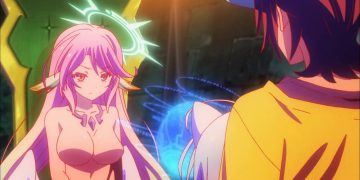For Californians of all ages, Art Laboe is a radio legend – playing records, dedicating songs to listeners, and introducing younger generations to “oldies but goodies.” After nearly 80 years on the air, Laboe, a renowned DJ and beloved Los Angeles personality, has retired his microphone for good.
Even up until his death, Laboe didn’t change much about his routine, and his baritone voice was as strong as ever. Even after 70 years, he was still hosting his own radio show and emceeing live concerts–jobs he started at the very beginning of his career. Additionally, he has worked as a DJ on stations KDAY and WWDC. He also hosted “The Art Laboe Connection” on KDAY station recently.
Throughout his long and successful career, Laboe has amassed a large fortune. Laboe’s love for music began when he was just a child. As a teenager, he started working at the local radio station KTYM in Inglewood, California. He quickly rose through the ranks and became one of the most popular DJs in the area. He was not a racist and would play any song requested over the air. He was also one of the first DJs to allow anybody, regardless of race, to make a request.
All About Art Laboe and How He Helped desegregate South California:
Art Laboe was an American disc jockey, songwriter, record producer, and radio station owner known as “The Voice of a Generation.” He is mostly credited with inventing the phrase “Oldies but Goodies.” Joanna Morones, his spokesperson, confirmed to CNN that Laboe died on Friday after a short illness caused by pneumonia.
In the 1960s, Laboe started his own record label, Original Sound Records. The label helped to launch the careers of many artists, including Sonny & Cher, Iron Butterfly, and The Righteous Brothers.
He helped to desegregate Los Angeles as a result of his involvement with the NAACP. Laboe’s on-air popularity rose, and he started to draw in large audiences of people from all walks of life. He approached the owner of Scrivner’s Drive-In about sponsorship while hosting a local radio show. In exchange for purchasing advertising spots, Laboe agreed to inform his audience that he would meet them at the drive-in after the show.
After the success of the post-show meetup, Laboe decided to host a live remote from Scrivner’s Drive-In on the corner of Sunset and Cahuenga in Los Angeles. Art explained that when he started performing, the audience was primarily white teenagers. With the increased popularity of live broadcasts and police harassment of the teenagers who attended them, Laboe sought out a new location to host dances.
Laboe selected the El Monte Legion Stadium for his event. Since it was located outside of Los Angeles, Laboe didn’t have to go through the hassle of obtaining approval from the city council.
Prior to Laboe, the El Monte Legion Stadium only hosted events such as country jamborees and boxing matches. That all changed when he started hosting Saturday night dance shows that appealed to teenagers of diverse backgrounds, but mostly Hispanics. In a city often segregated by race and class, Laboe united teenagers from all walks of life in one central location.
He took requests from anyone who called in without discrimination and was also one of the first DJs to allow people of different races to request a song.
Art Laboe Net Worth:
Laboe had earned his fortune through his successful career as a DJ, songwriter, record producer, and radio station owner. Even though he is now no more, Laboe’s legacy will continue to live on through his music.
Art Laboe’s wealth has grown considerably throughout his eight-decade career as a radio host. He created several streams of income that sustained his business empire.
During World War II, Art Laboe’s wealth-building procedure began. KSAN in San Francisco was where he made his radio debut. Then he started working at KCMJ in Palm Springs. In a few days, he went back to Los Angeles, where he was employed at KPOP.
But what made Art Laboe’s net worth and his career iconic was when he decided to start a radio show while on the road. He would be live-streaming it. He used to perform songs that were popular with the audience in order to meet their demands. Apart from that, Art Laboe’s net worth was amplified when he started working on the album “Oldies But Goodies”. He also established the record label “Original Sound Records” later that year.
His 2006 debut in the show “The Art Laboe Connection” was a big success. Along with this, he launched “The Art Laboe Sunday Special,” which is available in 14 radio markets.
Art Laboe’s net worth is the result of his many successful business ventures. Laboe’s net worth was $7-8 million at the time of his death. His assets include palatial homes and investments, and it is uncertain who will receive the money. He earns a significant salary from his profession. He has been able to accumulate a lot of money through his sources of income, allowing him to live an incredibly lavish and pleasant lifestyle.
Laboe’s death has left many of his fans mourning the loss of an icon. He was a true pioneer in the world of radio and will be remembered for his contributions to the industry. Art Laboe’s net worth will continue to grow posthumously as his legacy lives on.




